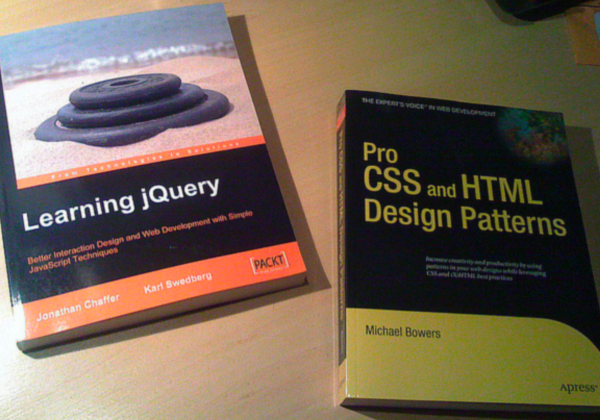How To Balance your Skills Between Design and Code
Web designers and developers are usually seen working together on various projects. Designers end up following a path of creating pixels, while developers pick up the frontend and backend coding techniques. If you find yourself leaning towards either side then it’s worthwhile to follow whichever path interests you the most.
But it’s also important for some people to have a balance between these two facets. In this article I want to share some ideas for balancing your own skillset between coding and designing interfaces. These topics mostly pertain to building websites but you could also consider these ideas for app & software developers, too.
The Weak Spot
It’s difficult for somebody to be amazing at both design and development. You may build some solid skills working in both areas, but I feel there is always one area weaker than the other. If this is true for yourself as well then learn to embrace the feeling!
I truly love design and code but I enjoy coding much more than designing. This means I’m more prone to go out and study a tutorial or practice a new WordPress template rather than pop open Photoshop. When you find yourself going out to learn new things take a moment to pause and reflect. Where are you trying to do and what would you like to accomplish with your skills?
It takes a lot of effort to push yourself into the weaker side. I know plenty of designers who just cannot deal with learning jQuery or CSS. It’s definitely an uncomfortable feeling at first. But after a few days or weeks of practicing you’ll begin to warm up to the new concepts.
Practice Makes Perfect
The best way to attain a nice balance is through practice and perseverance. There’s no way you’ll learn any new techniques if you don’t even try to study them. But you also can’t expect to be a whiz after reading a few articles.
Adobe Photoshop and Illustrator are confusing tools to jump into and start learning. Designers who master these software suites have spent hours and hours toying around and practicing new ideas. Granted there is rarely a point of “mastery” but you can only improve your skillset by trying something new. This is also the case with developers who move between frontend and backend coding.
Defining Levels of Interest
When practicing new skills it’s the best period to reflect and consider just how much you’re really interested. I know that I can put together a decent layout mockup in Photoshop and so I rarely go out and learn new techniques. There is no motivation behind further research.
If you’re at a comfortable position with your own knowledge of design or dev then why push yourself too far, ending up stressed out? Looking at the other side there is only so much coding a designer will need to study. Frontend HTML5/CSS3/JS is enough to put together a fully functioning website on any web server. PHP or Ruby isn’t necessary and should often be left up to full-time developers.
However I would never discourage the idea of studying a new programming language. When you can work on top of open source projects like WordPress then it’s easier to study a language such as PHP. Then you’re not just learning to program PHP but also how to work in WordPress as well.
Filling the Void
The times when I’ve forced myself to learn a new language or design technique have been in times of necessity. Often you’ll require balance at a point when you need to put something together and don’t know anybody else to help out. It’s not easy finding someone else to code jQuery for you, or design a website layout from the kindness of their heart.
Keep yourself interested in web design/dev by working on new project ideas. When you have a new concept start sketching ideas and plan what needs to be done. With a list of ideas you can move forward quickly and pick up your education along the way. You’re building something of value and learning new techniques which you can implement later on additional projects – totally a win-win situation!
This is certainly admirable and not something that every web professional can accomplish. But with Google’s populated search results and communities like Stack Overflow it’s never been easier to solve your own problems via the Internet.
Splitting Up Work
When you jump between different ideas for design and development you won’t retain as much information. I find it’s easier to focus on a specific topic for any extended period of time – maybe 2-3 days or even up to a week or two. This gives you a few nights to sleep and refresh your mind before coming back to your work the next day.
It’s important to understand how to pace yourself and not get too overly emotional. It can be super frustrating to learn new software or a new development language. And this is especially true if you’re not very familiar with any of the underlying concepts. This is why it will take so much longer to pick up a new technique as compared to building off your existing knowledge.
You may also have to juggle working on these ideas along with your day-to-day work. Unless you’re learning as a student then you will likely have a job or some other kind of freelance work. Make sure your work stays top priority since you need money to live comfortably. But after you’re done make sure you can find some time to get back into the education process.
Scheduling Matters
If you aren’t somebody who likes to plan then you better get accustomed to it! Planning and scheduling is an important part of becoming a skilled web designer/developer. Although this is true for many careers including wealthy business tycoons. You need to have a solid guess at how much time a particular task will take to be completed.
And when you can schedule your work around in a day then this leaves you open to scheduling some practice time as well. Even an hour every few days will add up quickly. And the more concentrated you are the more you’ll push forward into new territories. Understand that schedules are meant to be broken, but keeping a daily plan as a fallback is never a bad choice.
Final Thoughts
This is a tough subject to explain because it doesn’t pertain to most web designers or developers. It’s very rare that somebody is interested in expanding their knowledge on both topics and actually follows through. It’s obviously a long journey, but I’m hoping these tips will get you started off in the right direction.




